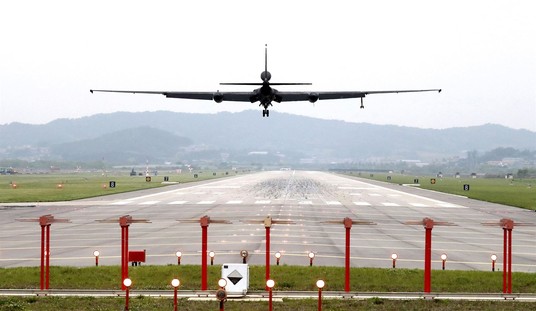Both the Israeli release of more than a hundred Palestinian killers and the American release of five Taliban killers from Guantanamo are U.S. policy decisions, so it’s fair to treat them as part of a single mindset. There are many possible reasons for releasing prisoners, but most of the time, and especially in recent years, such actions are part of a bigger issue, as are these two examples. The prisoners are typically pawns on a geopolitical chess board. Both Israel and the United States have been involved in this game for decades. It all started as barter, but it has now become an embarrassing form of appeasement.
The Israelis have frequently released Palestinian prisoners, as a component in efforts to reach a stable agreement between the two enemies, but the practice began in 1971 as a simple one-on-one swap, when a terrorist from al Fatah was released in exchange for an Israeli night watchman who had been abducted by the Palestinians.
–The next known deal was in 1979, when an Israeli soldier was ransomed for 76 Palestinians.
–In 1983 the numbers got bigger. After the war in Lebanon, Israel released 65 terrorists held in Israeli prisons, plus 4,700 Palestinians and Lebanese POWs, in exchange for six IDF soldiers.
–In 1985 Israel sent 1,150 prisoners to the Palestinians to gain the release of three soldiers. This deal was the first of two times Israel released Sheikh Ahmed Yassin, a prolific killer who became the founder of Hamas. He was released a second time in 1997, swapped for two Mossad agents arrested in Jordan in a failed operation to assassinate Khaled Mashaal, Hamas’s current leader. Yassin promised to give up suicide bombing, but almost immediately resumed the practice. He was killed in 2004.
–The year 2004 saw the celebrated deal with Hezbollah, negotiated by German government officials, which sent 435 prisoners from Israel to the Shi’ite terrorist group, in exchange for one live Israeli (Elhanan Tannenbaum) and the bodies of three others.
–More than six hundred Palestinian prisoners were released between 1993 and 2000, some as part of deals like the Oslo Accords, others as good-will gestures in the context of other negotiations, such as the Wye River Agreement.
–The biggest recent deal was with Hamas: the release of more than a thousand Palestinians in exchange for the safe return of captured Israeli soldier Gilad Schalit, in 2011.
It’s easy to see that there is nothing very new in the latest Israeli prisoner release, neither in the fact itself, nor in the role American pressure undoubtedly played in bringing it about. In the eighties and nineties, Israel released prisoners in response to American pressure, and as a way of fending off other American demands, such as yielding territory or shutting down settlements.
As for the American liberation of terrorists, that, too, has been going on for some time. There has been a steady flow from Camp Gitmo; the number of prisoners held there has fallen from well over seven hundred to 167 as of a year ago. Some have been released outright, others have been transferred to other countries. Many of them have returned to the battlefield.
–When we left Iraq, more than 300 Iranian prisoners under U.S. military control were turned over to the Iraqi government, which promptly sent them home. Many of them were known to have been involved in lethal terrorist attacks against American troops in Iraq, and there was no doubt that the Iraqis were going to release them. Thus, despite the many claims–most recently by the estimable Jonathan Tobin, whom I admire– that the United States “would never” release killers of Americans, we’ve done it repeatedly. Does the name Ali Daqduq mean anything to you? Here’s what I wrote about the disgusting appeasement of Iranian terrorism in late 2011-2012.
–In April of this year, an Iranian scientist, Mojtaba Alarodi, was released from prison in California, where he was accused of sanctions-busting regarding technology useful in building nuclear weapons. According to information I have received from usually reliable foreign sources, he was swapped for an American CIA officer who had been arrested in Iran.
–The United States has been negotiating, and paying ransom, for the release of American prisoners for a long time. The most celebrated example is the Iran-Contra affair, in which several American hostages held by Hezbollah were released at Iran’s direction, in tandem with the sale of American arms and the provision of American intelligence to Iran. This was all part of an effort to “reset” the U.S.-Iranian relationship, as well as a more narrow attempt to ransom U.S. officials–notably the CIA officer William Buckley–from torture (he was murdered, in fact).
The two recent prisoner releases in Israel and Cuba are part of a longstanding pattern. Both are part of broader efforts to achieve diplomatic progress with enemies, on the one hand the Palestinians, on the other the Taliban. So there’s a history on the basis of which we can anticipate the most likely result: failure. These releases are pure gestures, they aren’t part of any (known) trade. All we and the Israelis get for the gestures is the possibility of negotiations. We don’t get any of our hostages, we don’t even get a gesture from them.
The only thing we get is contempt, for giving up something they want without advancing our own interests or gaining anything–substantive or even symbolic–in return. That’s not even an amoral maneuver of human lives in the name of saving our citizens or paying off those who seize them. It’s a textbook case of appeasement.
Truly leading with the behind.
UPDATE: Daniel Greenfield points out that it’s even worse than I wrote. We could have swapped the five Gitmo terrorists for an American hostage. See here.









Join the conversation as a VIP Member